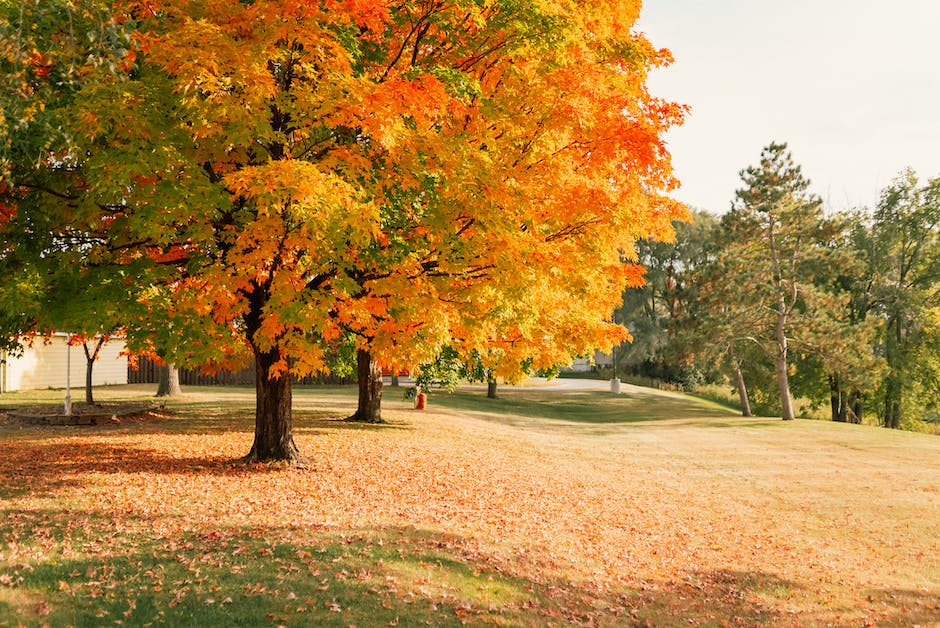Oak trees are a type of tree that is known to produce a high amount of pollen, which can be a trigger for allergies for some people. There are a few different reasons why oak trees may be more likely to cause allergies, including the size of the pollen grains and the fact that the pollen is very light and easily airborne. Additionally, oak trees are found in many parts of the U.S., which means that they can be a significant source of pollen for many people.
There is no definitive answer to this question as everyone’s allergic reaction to oak trees varies. Some people may have a severe reaction to oak trees, while others may only experience mild symptoms. If you are allergic to oak trees, it is best to avoid them altogether.
How do you deal with oak allergies?
If you’re suffering from allergic conjunctivitis, there are a few things you can do to ease your symptoms. First, try taking an antihistamine orally to help control your allergies. You can also use allergy eye drops to help relieve any irritation and inflammation.
If you have oak tree allergies, you may experience a range of symptoms that can be anywhere from mild to severe. These symptoms can include a stuffy or runny nose, sneezing, coughing, and red, watery, or itchy eyes. Some people may also experience an itchy throat or nose, fatigue, and potentially dark circles under the eyes. If you are experiencing any of these symptoms, it’s important to see an allergist to get proper testing and treatment.
What tree causes the most allergies
If you’re allergic to birch, elm, cedar, oak, pine, poplar, or walnut trees, you’re not alone. These common plants and trees can cause allergies in many people. If you’re allergic to ragweed, you may be particularly affected in the fall when ragweed pollen is at its peak.
Oak trees are a common source of allergies for many people. Their pollen can be difficult to avoid and can cause a range of symptoms, from sneezing and watery eyes to more severe reactions. If you’re allergic to oak pollen, it’s important to take steps to protect yourself and minimize your exposure.
What time of day is oak pollen the worst?
Pollen counts are often at their highest in the morning or early afternoon. This is when allergies are often the worst, as there is a high concentration of pollen in the air. If you suffer from allergies, it may be best to avoid being outdoors during these times.
Oak tree pollen can be a real problem for people with allergies, as it can linger in the air for a long time. The best way to deal with it is to try to avoid being outdoors when the pollen count is high, and to keep your windows and doors closed as much as possible. If you do have to go outside, make sure to wear a dust mask to help filter out the pollen.
What is the best allergy medicine for oak pollen?
Antihistamines are a type of medication that can help relieve symptoms of allergies. They work by blocking the action of histamine, a substance that is released by the body in response to an allergen. Oral antihistamines are taken by mouth and are available over-the-counter or by prescription. Some examples of oral antihistamines include cetirizine (Zyrtec Allergy), fexofenadine (Allegra Allergy), and loratadine (Claritin, Alavert).
Even though each tree species releases pollen for only six to eight weeks, the overall oak pollen season lasts nearly four months because of the sequential blooming of different species In Northern California. The coast live oak starts the oak pollen season in March, and Holly and cork oaks end the pollen season in June.
How long does an oak tree drop pollen
Oak tree pollen can be a real problem for people with seasonal allergies. The pollen drop usually lasts for four days, and the pollen is very fine and yellowish. It can get on car hoods and deck floors, and cause a lot of problems for people who are allergic to it. Sometimes, heavy rains or humid conditions can delay the release of pollen, or affect the number of acorns produced on a single tree.
These are some of the best trees for allergy sufferers. Crabapple trees are known for their hypoallergenic properties, as are crepe myrtle and dogwood trees. Eastern redbud, magnolia, and pear trees are also good choices for those with allergies. tulip tree is another good choice for people with allergies.
What is the number 1 most common allergy?
While milk is the most common allergen for children, adults tend to be allergic to shellfish more often. For both groups, peanut and tree nut allergies are also common. It’s important to be aware of these potential allergies and to avoid exposing yourself or your child to trigger foods.
Your allergies might feel worse at night because now you’re adding indoor triggers into the mix. “A lot of people are allergic to things in their bedrooms,” said Dr. Jaygoo example, dust mites or pet dander. “And if you don’t have a good air filter or you sleep with your pet, that can trigger allergies at night.”
Do oak trees clean the air
Oak trees are excellent at improving air quality. They store carbon dioxide and exhale oxygen through the process of photosynthesis. Additionally, the leaves of an oak tree absorb airborne pollutants. It has been observed that one tree can absorb up to 10 lbs of air pollution in a single year. Oaks can live for up to 400 years, making them a valuable asset in the fight against pollution.
As the leaves fall, live oaks produce male flowers called catkins, which release copious amounts of pollen. This pollen can turn the tops of cars and houses a yellow-green color, and it can be a real headache for people with allergies.
Can oak pollen cause headaches?
If you suffer from sinus headaches, it may be because of common allergens like pollen, mold, and pet dander. These can cause your body’s immune system to react, even if you don’t have any other allergy symptoms. To help ease your pain, try avoiding exposure to these triggers and consider taking medication to help relieve your symptoms.
Shedding substantial amounts of pollen that spreads via wind, oaks are commonly allergenic and may cause severe reactions. Many people suffer from hay fever (ie, allergic rhinitis) symptoms due to oak pollen. Oak trees are widely distributed throughout the Northern Hemisphere, so it is difficult to avoid their pollen. If you suffer from oak allergies, you should consult a doctor to determine the best course of treatment.
What foods to avoid with oak allergy
Oak, pecan, and hickory trees produce acorns, which are a type of nut. These nuts are often eaten by animals, such as squirrels, birds, and mice. Furthermore, the nuts of these trees can also be used to make flour ormeal. Acorns and other nuts from these trees are also a key ingredient in many types of African and Native American traditional dishes. Finally, the leaves of these trees are used in some cultures for making tea.
Overall, rain is generally good for people with pollen allergies. However, rain can cause some problems for people who are allergic to grass, weeds, dust, and mold. When it rains and the level of grass and weed pollen is high, the raindrops can break up the clumps of pollen into smaller particles. This can cause more allergic reactions for some people.
How do you get rid of allergies naturally forever
There is currently no cure for allergies, but there are over-the-counter (OTC) and prescription medications that may relieve symptoms. Avoiding allergy triggers or reducing contact with them can help prevent allergic reactions. Over time, immunotherapy may reduce the severity of allergic reactions.
There are many different types of natural remedies that are thought to help ease allergy symptoms. These include exercise, nasal irrigation, probiotics, prebiotics, and various herbs and supplements. For many of these, research is still limited on how they affect allergies. Talk with your doctor first to let them know your symptoms.
Why do my allergies get worse at night
One of the biggest causes of nighttime allergies is dust mites – microscopic, spider-like bugs that feed on exfoliated human skin cells. These critters can be found in mattresses, pillows, bed linens, carpets and upholstered furniture. Dust mites won’t bite you or harm you. However, their feces and body fragments can cause allergies. If you’re allergic to dust mites, you may experience symptoms such as sneezing, coughing, watery eyes, runny nose and difficulty breathing. To reduce dust mites in your home, wash bedding in hot water (130 degrees Fahrenheit) every week. You should also vacuum carpets and upholstered furniture regularly. If you’re still having trouble with dust mites, consider using allergy-proof covers for your mattress, pillows and other affected items.
If you’re experiencing any of these symptoms, it’s possible you’re allergic to oak tree pollen. Though oak trees are beautiful, their pollen can be a real nuisance for those with allergies. If you think oak pollen might be the cause of your symptoms, see an allergist to find out for sure and get tips on how to manage your allergies.
Does oak pollen cause fever
The main point to remember is that allergies themselves do not cause a fever. However, in some cases they may lead to other health issues that can cause a fever. For example, a sinus infection can have similar symptoms to allergies and may cause a fever. Therefore, it is important to be aware of the other possible causes of a fever in addition to allergies.
Catkins are male flowers that produce copious amounts of pollen. While shedding leaves, live oaks simultaneously produce catkins, which can be used as compost.
Do all oak trees have acorns
Did you know that all oaks have acorns? Or that there is no such thing as an Acorn Tree? Acorns are the fruit of oak trees and they come in two varieties: those that take two growing seasons to mature (Red Oaks) and those that mature in one season (White Oaks). Oak trees have greenish, inconspicuous female flowers and they’re wind pollinated.
Cork is a great option for people with allergies since it is naturally hypo-allergenic. Suberin, the waxy substance that occurs in the bark of the cork tree, repels wood rot as well as insects, so mildew and mould have no place to nest. Cork is also a sustainable material that is biodegradable and renews itself every 9 years.
Conclusion
No, oak trees are not bad for allergies. Allergies are caused by a reaction of the immune system to a foreign substance, such as pollen or mold.
There is no definitive answer to this question as different people can have different reactions to oak trees. Some people may find that they are more allergic to oak trees than other types of trees, while others may not have any reactions at all. It is therefore important to consult with a doctor or allergist to determine if oak trees are bad for allergies.
Jackson Hill is a passionate arborist with years of experience in the field of trees. He developed his fascination with trees at a young age, spending countless hours exploring the forests and climbing trees. Jackson went on to study arboriculture and horticulture at Michigan State University and later earned a degree in forestry from the University of Michigan.
With his extensive knowledge and expertise, Jackson has become a trusted authority on trees and their impact on the environment. His work has helped shape the field of arboriculture and he continues to be a leading voice in the industry.
